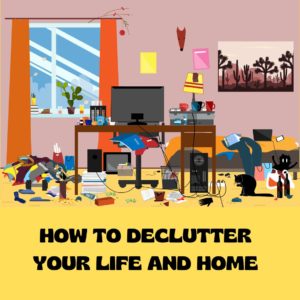
Almost everything we own has some sentimental attachment to it. The boxes full of every drawing done by your child in elementary school, the matchbooks from all your vacations or a collection of antique linens handed down from your grandmother; the list could go on and on. These items are found in the closets, kitchens and garages of many people’s homes. How do we let go of something that holds a strong memory? We asked expert organizer Tracy McCubbin for an answer to this emotional question.
Tracy learned early on that “there [is] an emotional component to our attachment to our stuff” and has identified 7 emotional clutter blocks that keep us from letting go. These clutter blocks are:
- My Stuff Keeps Me in the Past. Do you have every handprint or abstract artwork done by your children stashed in the garage? Do you have the original china from your first marriage (now divorced) in a kitchen closet? How about those Gloria Vanderbilt jeans that you know someday you will fit in again? Chances are you are stuck in the past and missing what is going on today. Empty nesting, divorce and our ever changing bodies are hard life changes but holding on to the past may keep you from looking forward to the future. Tracy stresses to stop thinking that your best days are behind you and letting go of many of these items is a great first step.
- My Stuff Tells Me Who I Am. Are the amazon boxes lining your entryway? Does your purse HAVE to be designer label and your clothes name brands? Chances are you using these labels and items to help define your personal self worth. Your value is not tied to an expensive or easily recognizable item. You should as the question: Are these designer items serving you or are you serving the brand?
- The Stuff I’m Avoiding. Unopened bills/correspondence or boxes are indicators of this clutter block. If you ToDo list is too long and your ability/desire to complete tasks short, the avoidance block is your challenge. Unfortunately, this block can have serious financial consequences. Try sharing the burden with someone you trust or a financial advisor.
- My Fantasy Stuff for My Fantasy Life. Is the Peloton you “had to have” collecting dust or housing your laundry? Or the air fryer that you got on sale still in the box? We have big dreams that don’t always work with our daily reality. It looks like a garage sale may be in your future.
- I’m Not Worth My Good Stuff. Use the things you have because you are worthy of it everyday. Wear the beautiful dress that you are waiting for just the right event to use. Drink the expensive wine that you were waiting to use for a special occasion. Use the fine china for tonight’s dinner. In other words, everyday is special and you don’t need to wait for just the right moment. That moment is today!
- Trapped with Other People’s Stuff. You just can’t say no, can you? Did you really need that antique dining room table from Aunt Ellen? Did you keep all the pictures when you cleaned out of your parent’s home? If you said yes to either of these, this block is for you. Remember No (you can add thank you) is a complete sentence and guilt need not apply.
- The Stuff I Keep Paying For. Is you storage unit filled with things you might need some day. The reality is that you will probably never need it and you are paying monthly to hold on to it. Think about what you could be using that money for instead paying for the unit.
Now that you have identified the emotional blocks, how do you remove the clutter? Tracy has some incredible resources on her website that will help.
Tracy’s website DClutterfly.com includes great resources that address the emotional components of decluttering as well. The Sedona Method (an audio course) can be found in your local library and can be listened to as you declutter. Therapy and tapping will help and she also recommends the book Your Money, A Love Story by Kate Northrup.
Now that you have identified the emotional blocks, how do you remove the clutter? Tracy has some more incredible resources on her website that will help.
For example, you can recycle clothing/fabrics by:
-
H&M accepts all fabric now and gives you a discount on your next purchase.
-
Madewell takes recycled jeans you drop off and turns them into insulation.
-
Levis will send you a 20% off coupon and a downloadable shipping label for your old jeans.
-
Blue Jeans Go Green turns old denim into housing insulation.
-
Eileen Fisher has a program called Renew, where they will take back their clothes and donate them if they are still in good shape. If not, they will recycle the fabric.
-
Bras & Undies – Most clothing donation places won’t take them but this organization does http://www.brarecycling.com/.
-
Lastly, if you want to take your recycling to the next level, this company accepts and recycles EVERYTHING, for a cost: TerraCycle.
If you would like to find out if your antiques or furniture have more than just an emotional value, Tracy recommends:
The strain of holding on to stuff can sometimes be greater than the emotional attachment to them. As Tracy likes to say, thank the items for the service to your family and allow them to bring joy to someone else. Your memories are held in your mind and spirit not in the stuff.
Research: